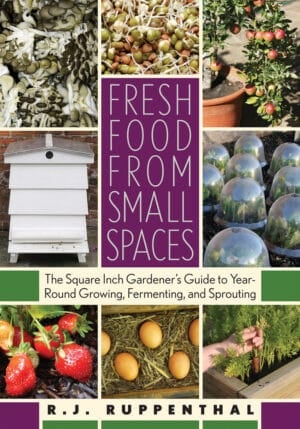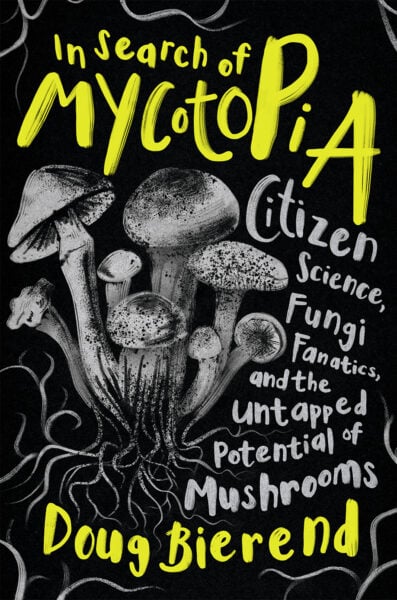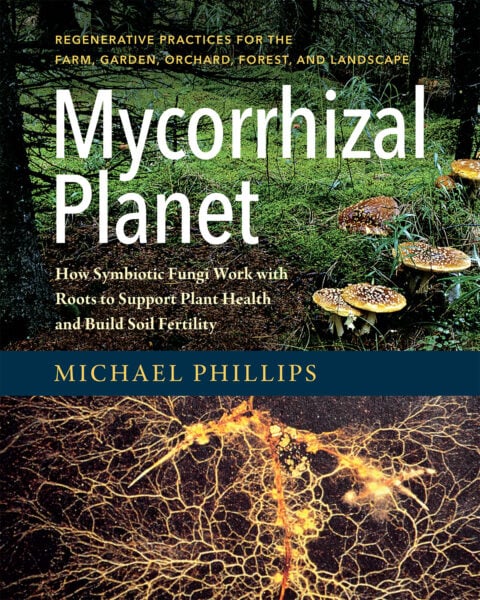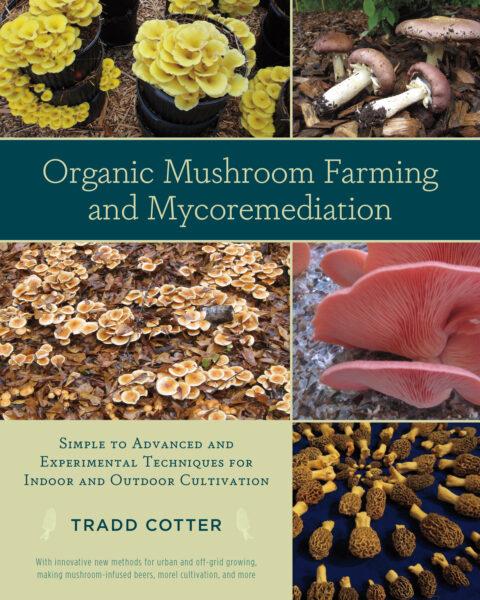A Guide to Growing Oyster Mushrooms Indoors
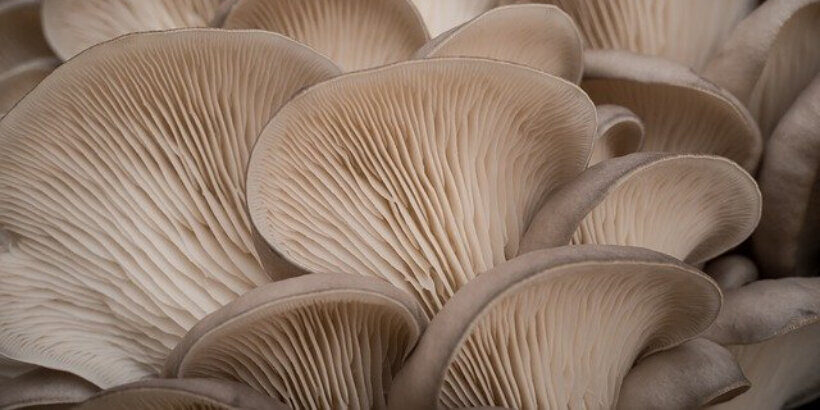
What’s so great about oyster mushrooms? First, you can add them to the short list of foods that can be grown indoors!
This fungus can grow almost anywhere–from a log to a straw.
The following is an excerpt from Fresh Food from Small Spaces by R. J. Ruppenthal. It has been adapted for the web.
Oyster Mushrooms: The Easiest Mushrooms to Grow
Though they are accustomed naturally to growing in wood, you also can raise oyster mushrooms in a variety of other growing media, including straw or sawdust. The easiest way to begin is with a kit.
If you want to experiment on your own, then oysters give you a greater chance of success than other mushrooms.
There are dozens of varieties of oyster mushrooms, from pin-sized to trumpet-sized, so check with your kit or spore supplier to see which kinds are available and recommended for your climate. Most grow in an ideal temperature range of about 55 to 65 °F.
Growing Kits for Oyster Mushrooms
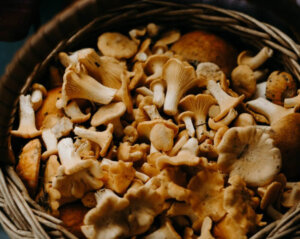 Most oyster mushroom growing kits consist of either a small inoculated log or a holey plastic bag filled with sterilized, inoculated straw or sawdust.
Most oyster mushroom growing kits consist of either a small inoculated log or a holey plastic bag filled with sterilized, inoculated straw or sawdust.
You can make your own kit using any of these materials, but I will recommend one other method that has worked well for many indoor mushroom growers.
Oyster Mushrooms: What You Need
For this you will need two milk cartons or small waxed-cardboard boxes, enough sawdust to fill them, 2 cups of whole grain flour or coffee grounds, and some oyster mushroom spawn.
The basic steps are as follows, but feel free to improvise. If sawdust is unavailable, you could also use straw for this.
-
Cut out the top of the milk cartons so that their edges are of even height. Punch several small holes in each side of both cartons.
-
Sterilizing (optional): If you are using sawdust that has already been inoculated with spawn, then do not try to sterilize it or you will kill the fungi. If you are using additional sawdust that has not been inoculated yet, then you may want to sterilize it. The easiest ways to do this are by boiling, steaming, or microwaving it. If anyone else in your household might object to cooking sawdust in the kitchen, then you might want to try this step when no one else is home. To sterilize with a microwave oven, fill a microwave-safe bowl with sawdust, plus the flour or coffee grounds, and wet down this mass with enough water so that it is the consistency of a wet sponge. You may need to do several successive batches to sterilize all of your sawdust. Nuking the sawdust on high for two minutes or until the water begins to boil off will kill any unwanted organisms and leave your kitchen smelling like either a wood shop or coffee shop. You also can boil or steam the growing medium in a pot of water in the kitchen or over a campfire, with or without a steamer basket. After it has boiled for a few minutes, turn off the heat, keep the sawdust covered, and let it return to room temperature.
-
Using non-chlorinated water, wet the sawdust until it’s thoroughly damp.
-
Then mix in your spores or inoculated material.
-
Tightly pack this damp growing medium into your milk cartons and leave them in a cellar, garage, storage locker, or dark cabinet. You can put some plastic underneath the cartons and cover them loosely with plastic if desired. If insects are a problem, then spray cooking oil around the plastic to trap them.
-
Keep the sawdust mix moistened regularly with non-chlorinated water, and in a few months your fungi should fruit repeatedly. To harvest mushrooms, twist them out gently so that their stems do not break.
Recommended Reads
Drill, Plug, Wax, Wait: 6 Simple Steps to Growing Mushrooms Outdoors
Recent Articles
Garden strawberries are excellent for both covering the ground and for growing fruit. If you’re planning out a forest garden, or are just looking for a plant to use as ground cover, strawberries are a great option. The following is an excerpt from The Home-Scale Forest Garden by Dani Baker. It has been adapted for…
Read MoreAsparagus is a delicious vegetable with a layered history. How did this aspiring spear make its way from growing in the wild to appearing on our plates? The following is an excerpt from the The Seed Detective by Adam Alexander. It has been adapted for the web. “Nature gives us the key to every secret…
Read MoreInterested in growing trees? Here are some tips on successfully planting, transplanting, and pruning trees to create a flourishing forest garden! The following is an excerpt from The Home-Scale Forest Garden by Dani Baker. It has been adapted for the web. Planting Potted Trees and Shrubs If you order potted trees, check with your supplier to…
Read MoreChances are, you’ve seen cattails growing on the edge of your local lake or stream at least once or twice. Instead of just passing these plants, try foraging for and cooking them to create delicious seasonal dishes! The following excerpt is from The New Wildcrafted Cuisine by Pascal Baudar. It has been adapted for the…
Read MoreWith the right strategies and practices, composting on a small farm is surprisingly easy and inexpensive. Just follow these steps for making compost, and your farm will be thriving in no time! The following excerpt is from The Lean Farm Guide to Growing Vegetables by Ben Hartman. It has been adapted for the web. (All photographs by Ben…
Read More

